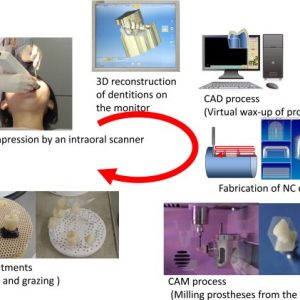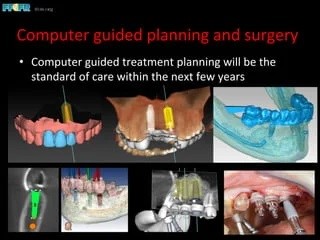Advanced Treatment Options
DIGITAL DENTISTRY
Digital dentistry refers to the use of digital technologies and computer-based systems in various aspects of dental care, diagnosis, treatment planning, and dental laboratory procedures. It involves the application of advanced software, imaging, and computer-aided design and manufacturing (CAD/CAM) techniques to enhance and streamline dental procedures.
Here are some key areas where digital dentistry has made an impact:
- Imaging and diagnostics: Digital imaging techniques such as cone beam computed tomography (CBCT) and intraoral scanners have revolutionized the field of dental diagnostics. CBCT provides 3D imaging of the oral and maxillofacial region, enabling precise treatment planning for procedures like implant placement, orthodontics, and oral surgery. Intraoral scanners have replaced traditional dental impressions, allowing for digital capture of the teeth and soft tissues.
- Treatment planning and simulation: Advanced software enables dentists to plan treatments digitally and simulate outcomes before initiating procedures. This helps in implant planning, orthodontic treatment planning, and smile design, allowing for more accurate and predictable results.
- Computer-Aided Design and Manufacturing (CAD/CAM): CAD/CAM technology enables the creation of restorations like crowns, veneers, and bridges digitally. Intraoral scanners capture the digital impression, which is then used to design the restoration on a computer. The design data is then sent to a milling machine or 3D printer, which fabricates the final restoration from a block of ceramic or other materials.
- Guided implant surgery: Digital tools like CBCT and specialized software allow for guided implant surgery. The 3D image data is used to plan the precise placement of dental implants, and surgical guides are fabricated using CAD/CAM technology to ensure accurate implant placement.
- Digital workflows in the dental laboratory: Digital dentistry has transformed dental laboratory procedures. Dental technicians can use CAD/CAM systems to design and fabricate dental prosthetics with improved accuracy and efficiency. This includes the production of crowns, bridges, dentures, and other dental restorations.
Digital dentistry offers several advantages, including improved accuracy, faster treatment turnaround times, enhanced patient communication through visual representation, and reduced reliance on traditional manual techniques. It’s always recommended to consult with a dental professional who is experienced in digital dentistry to determine the most suitable digital solutions for your specific dental needs.


